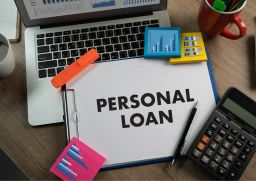What is a Personal Loan? How to apply for it?

When you need money but don’t have enough saved up, a personal loan may be the perfect solution. There are a few things to keep in mind when applying for a personal loan.
First and foremost, make sure you understand the terms and conditions of the loan in order to avoid any unpleasant surprises down the road.
Secondly, be sure to discuss your borrowing needs with a loan advisor so that you can get the best possible deal. And finally, don’t forget to repay your loan on time – it could mean big penalties if you don’t!
What is a Personal Loan?
A personal loan is a type of borrowing that involves a loan from a financial institution to someone who has a personal credit score.
A credit score is a number that reflects your credit history, including your outstanding debts, payment history, and credit utilization.
There are three main types of personal loans:
Unsecured loans (where you don’t have to provide collateral),
Secured loans (where you pledge some sort of asset as collateral),
Auto loans (where you borrow money to buy a vehicle).
Before applying for a personal loan, it’s important to understand the different terms and conditions. Here are some key points to keep in mind:
-The interest rate on personal loans can vary significantly, based on the loan amount, and the lending institution.
-Personal loans typically have fixed terms, which means that the interest will continue to accumulate even if you don’t pay back the entire loan amount on time.
-Before applying for a personal loan, make sure you fully understand the terms and conditions. You should also consult with an expert if you have any questions or doubts about your eligibility for a particular loan type or interest.
How do Personal Loans work?
A Personal Loan is a loan that you take out from a bank or other financial institution. You use the money to pay off a debt, cover an unexpected expense, or purchase an asset. To qualify for a personal loan, you usually must have good credit and be able to afford the payments.
To apply, you will need to provide your bank or other financial institution with some information, including your address, banking information, etc.
You will also be asked to provide information about the loan you are applying for, such as the amount of the loan and the terms of the loan.
Once your application is approved, your bank or other financial institution will contact you to schedule a meeting to discuss your loan application. At the meeting, you will sign a promissory note and receive an approval letter. The terms of the loan will be explained to you at the meeting.
After you have received your approval letter, you will need to deposit the promissory note into your bank account or other financial institution. The money you borrow from your bank or other financial institution is called an advance on your credit score. This means that if you cannot repay the loan on time, your credit score may reduce.
What are the types of Personal Loans?

Personal loans come in a variety of types and features, depending on your needs.
Here are the three main types of personal loans:
–Personal loan for a car: This type of loan is used to buy a car or to cover part of the cost of buying a car. You must have an excellent credit history and be able to provide documentation of your income and expenses.
–Personal loan for a college education: This type of loan is used to help pay for college tuition, fees, and other related expenses. You must have good credit history and meet specific eligibility requirements.
–Personal loan for a home purchase: This type of loan can be used to help pay for the down payment on a home, cover closing costs, or cover other related expenses. You must have good credit history and meet certain eligibility requirements.
What are the advantages of a Personal Loan?
There are a variety of reasons why people might want to take out a personal loan. Maybe you need the money to cover an unexpected expense, like a car repair. Maybe you need to buy something important, like furniture or a new appliance. Or maybe you just need some extra cash to tide you over until your next paycheck arrives. Regardless of the reason, taking out a personal loan is likely to be a cheaper and faster way to get the money. Here are some of the advantages of personal loans:
-Low-interest rates: Most personal loans have lower interest rates than credit cards or other types of loans. This means that you’ll pay less in interest over the life of the loan.
-Quick and easy application process: Personal loans typically require only a simple application form and an online credit check. Loans can usually get approved within hours, which makes getting the money you need quick and easy.
-No collateral required: Unlike with some other kinds of loans, there is no need to pledge any valuable assets as collateral for a personal loan.
How to apply for a Personal Loan?
The loan is typically used for small, short-term needs, such as covering unexpected expenses or paying off high-interest debt.
To apply, you’ll need to complete an application form. This is to be done with documentation of your income and credit history. Additionally, you may also be required to provide an Anatomy of a Credit Score report.
Once you have completed the application process, thereafter your lender will review your information. Hereafter, the decision of eligibility would come later. The lender will inform of the terms of the loan and how to pay it back.









